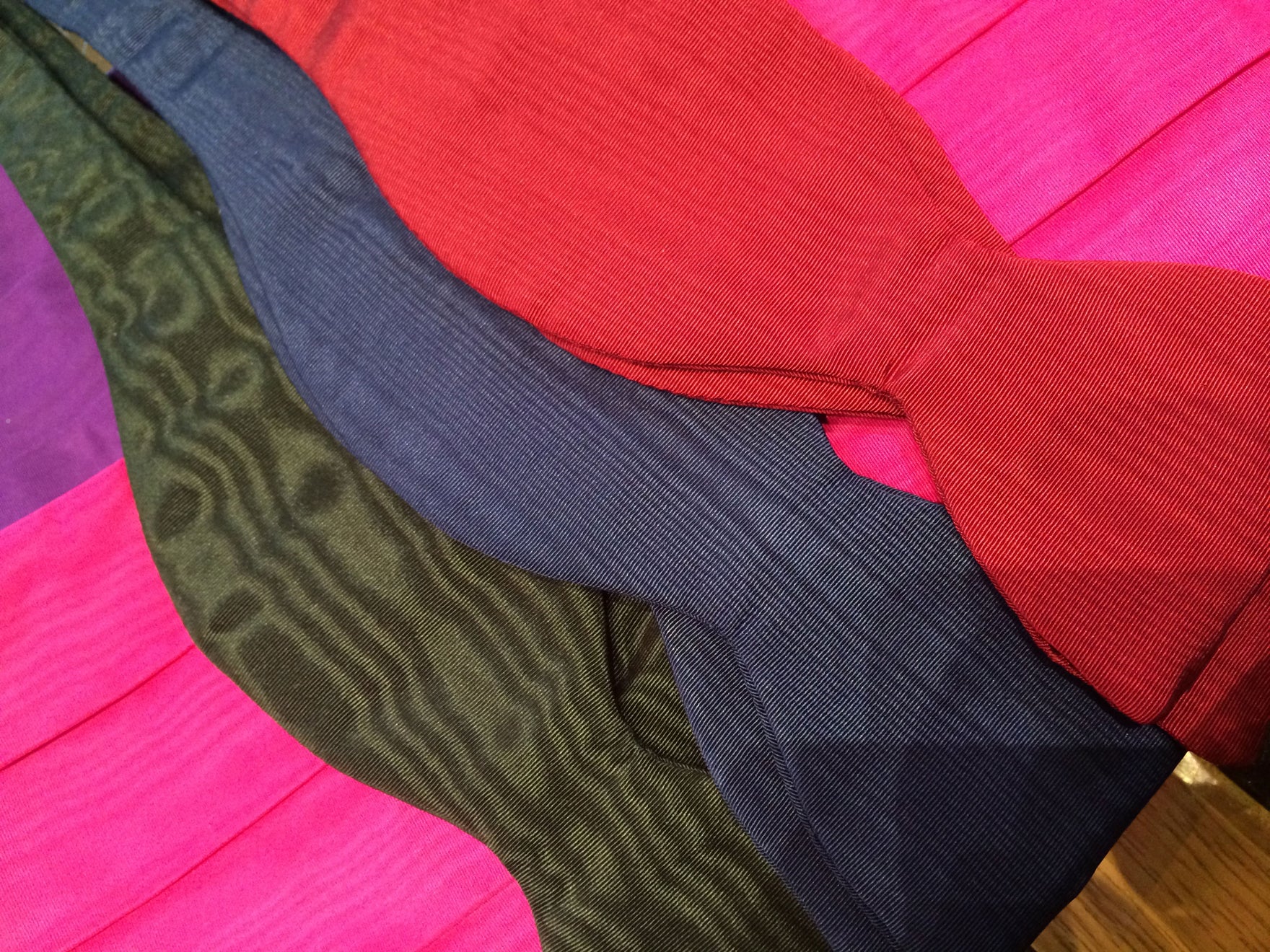The fabric Moiré is known for it's watered appearance and is produced mainly in silk, but also in wool, rayon and cotton. Originally moiré was only made in silk taffeta but can now be seen in cotton as well as synthetic fibres. The fabric was held in high esteem during the Middle Ages and was used for women's dresses, capes and trimmings. Peter the Great also wore a moiré ribbon sash.
 The watered appearance of Moiré is created by the finishing technique known as calendaring. The calendaring process involves the fabric being folded in half and passed under ribbed rollers at intense heat and pressure. During this process some of the threads get left whilst others get compressed and become flat, giving the fabric it's well known 'watered effect'. The calendaring process creates what would be 'true moiré', or what is known as 'moiré antique' or 'moiré anglaise'. Moiré can also be produced by being run through copper rollers.
The watered appearance of Moiré is created by the finishing technique known as calendaring. The calendaring process involves the fabric being folded in half and passed under ribbed rollers at intense heat and pressure. During this process some of the threads get left whilst others get compressed and become flat, giving the fabric it's well known 'watered effect'. The calendaring process creates what would be 'true moiré', or what is known as 'moiré antique' or 'moiré anglaise'. Moiré can also be produced by being run through copper rollers.
The watermark of the silk enables it to live so as the wearer moves, the pattern changes. Here at Budd we carry Moiré in braces, bow ties, cummerbunds and waistcoats, the waistcoats haven't been done for 25 years.
Our Moiré braces are hand cut and finished for us by Albert Thurston, with goats leather ends, nickel plating and finalised with a single back strap to ensure the highest quality finish. Our moiré bow ties and cummerbunds are hand cut and finished by our bow tie maker in Thornton Heath. In particularly, our white moiré bow ties are sized for a correct white tie finish.
But be aware of imitations or lesser Moiré that is usually mixed with acetate, but you're sure to be 'better dressed than bond' with one of our Moiré pieces.




